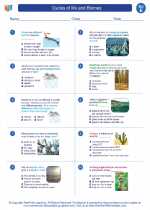Structure of Flagella
Flagella are composed of a protein called flagellin, which forms a helical structure. The flagellum is anchored to the cell membrane and extends outward from the cell. The base of the flagellum, known as the basal body, is embedded in the cell membrane and is responsible for the rotation of the flagellum.Function of Flagella
The primary function of flagella is to enable the cell to move. In bacteria, the rotation of the flagellum propels the cell through its environment. This movement allows bacteria to navigate towards nutrients or move away from harmful substances. In eukaryotic cells, such as sperm cells, flagella are involved in cell motility, facilitating the movement of the cell towards the egg during fertilization.Flagella in Prokaryotic and Eukaryotic Cells
In prokaryotic cells, such as bacteria and archaea, flagella are used for locomotion. Some bacteria have a single flagellum, while others may have multiple flagella arranged in various patterns. In eukaryotic cells, flagella are found in certain protists, algae, and sperm cells. It's important to note that the structure and mechanism of flagella in prokaryotic and eukaryotic cells are different, despite their similar function.Study Guide for Flagella
To better understand the concept of flagella, consider the following study guide:1. Structure: Describe the structure of flagella and explain how it is anchored to the cell. 2. Function: Discuss the primary function of flagella and provide examples of cells that utilize flagella for movement. 3. Prokaryotic vs. Eukaryotic Cells: Compare and contrast the presence and function of flagella in prokaryotic and eukaryotic cells. 4. Role in Cell Motility:.◂Science Worksheets and Study Guides Fifth Grade. Cycles of life and Biomes
Study Guide Cycles of life and Biomes
Cycles of life and Biomes  Worksheet/Answer key
Worksheet/Answer key Cycles of life and Biomes
Cycles of life and Biomes  Worksheet/Answer key
Worksheet/Answer key Cycles of life and Biomes
Cycles of life and Biomes  Worksheet/Answer key
Worksheet/Answer key Cycles of life and Biomes
Cycles of life and Biomes  Worksheet/Answer key
Worksheet/Answer key Cycles of life and Biomes
Cycles of life and Biomes  Vocabulary/Answer key
Vocabulary/Answer key Cycles of life and Biomes
Cycles of life and Biomes  Vocabulary/Answer key
Vocabulary/Answer key Cycles of life and Biomes
Cycles of life and Biomes 

 Worksheet/Answer key
Worksheet/Answer key
 Worksheet/Answer key
Worksheet/Answer key
 Worksheet/Answer key
Worksheet/Answer key
 Worksheet/Answer key
Worksheet/Answer key
 Vocabulary/Answer key
Vocabulary/Answer key
 Vocabulary/Answer key
Vocabulary/Answer key

The resources above cover the following skills:
LIFE SCIENCE (NGSS)
Ecosystems: Interactions, Energy, and Dynamics
Students who demonstrate understanding can:
Develop a model to describe the movement of matter among plants, animals, decomposers, and the environment.